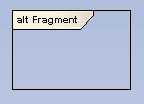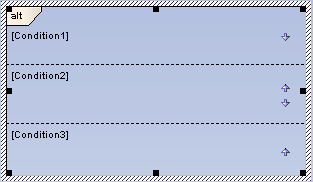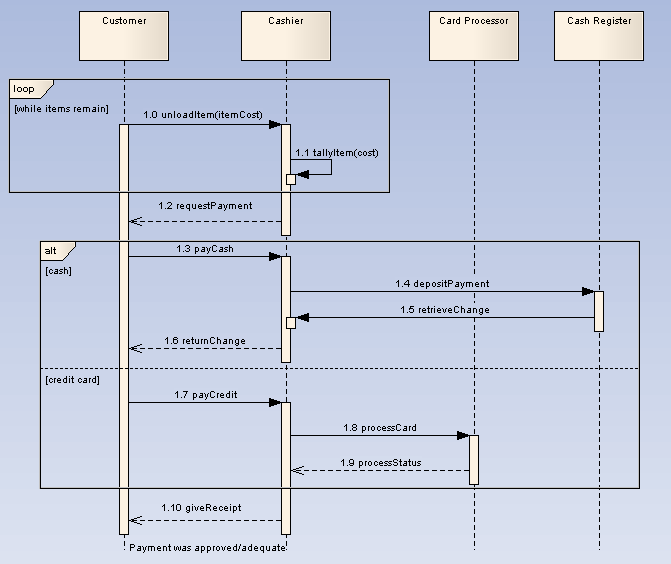
A Combined Fragment reflects a piece or pieces of interaction (called interaction operands) controlled by an interaction operator, whose corresponding boolean conditions are known as interaction constraints. It displays as a transparent window, divided by horizontal dashed lines for each operand.
The following diagram illustrates the use of Combined Fragments, with a Sequence diagram modeling a simplified purchasing process. A loop fragment is created to iterate through an unknown number of items for purchase, after which the cashier requests payment. At this point, two payment options are considered and an alternative fragment is created, divided to show the two operands: cash and credit card. After the fragment completes its trace, the cashier gives a receipt to the customer, under the fulfilled condition that payment requirements were met.
The order of interaction fragment conditions can be changed directly on the diagram. Select an interaction fragment with more than one condition defined. Up and down arrows appear on the right hand side of the each condition. Just click on the arrow to change the order.

Note: In order to select an interaction fragment, you must click near the inside edge or drag a selection rectangle around the fragment. This prevents accidental selection when moving connectors inside the interaction fragment.
Tip: Press and hold [Alt] to move a combined fragment independently of its contents.

Toolbox Icon
![]()
OMG UML Specification
The OMG UML specification (UML Superstructure Specification, v2.0, p. 409) states:
"A combined fragment defines an expression of interaction fragments. A combined fragment is defined by an interaction operator and corresponding interaction operands. Through the use of CombinedFragments the user will be able to describe a number of traces in a compact and concise manner."


